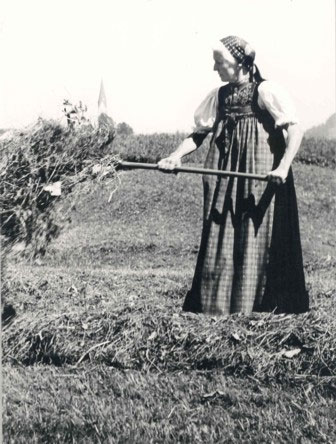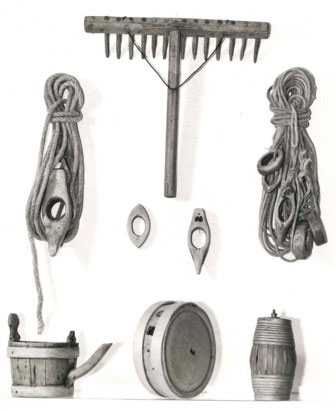Walser economy
 |
Thanks to the larger families it was possible to farm the land, alps and woods profitably. They succeeded in using the sun’s warmth thanks to their construction techniques. Further, they developed special ways of storage to preserve their agricultural products. Surpluses from the agricultural products were sold whereas many goods for daily usage had to be bought. While slaughter cattle was used for their own consumption, they could offer breeding cattle- mostly young calves- on the markets. The takings from this sale represented an important income. If a cow meant to be sold got sick or died this could mean a whole year of poverty for a small farmer. The Walser offered high-quality cattle and were seen as competent breeders. A lively trade emerged between the Walser villages and neighbouring regions; often even in more distant places. |
|
The Walser farmers
had a strong craftsmanship and generated enormous performances in order to
independently carry out the necessary tasks in their villages themselves. They
worked as bricklayers, carpenters, shoemaker, dressmakers, blacksmiths, weaver,
butcher and saddler to name a few. The goods were mostly fabricated during the
quiet winter months and could be offered for sale in other regions, too. This
stimulated trade and caused that many craftsmen worked far away for months to
secure their families and small homes. Tourism started as early as the 19th century in the alps representing one of the most grave changes in the Walser regions. Many of the former peasants became hosts. Taverns, hotels and guesthouses changed the view of many places. New professions were learnt creating new chances to earn money. |  |








